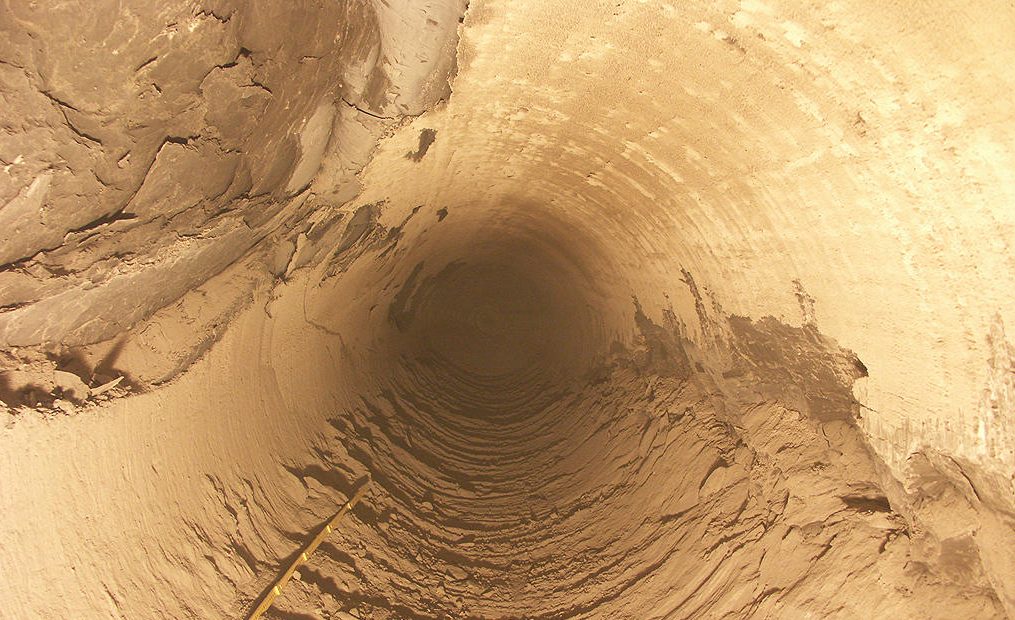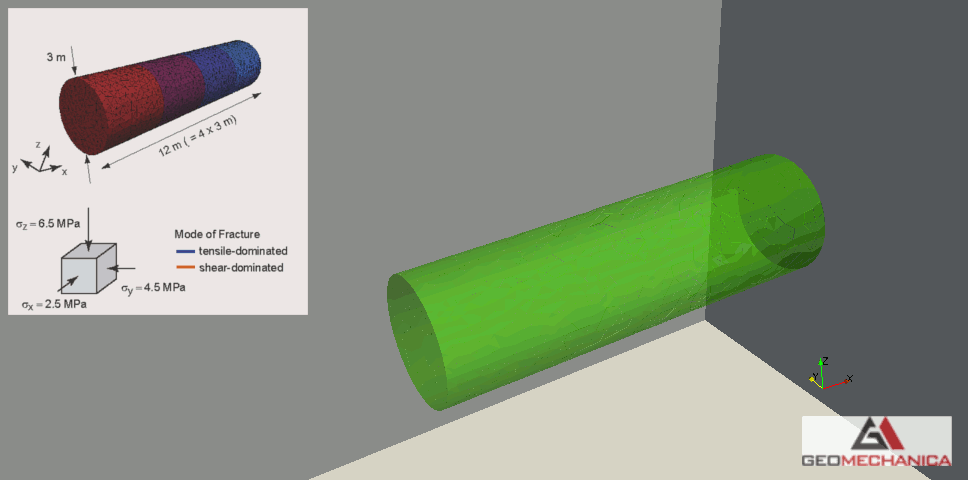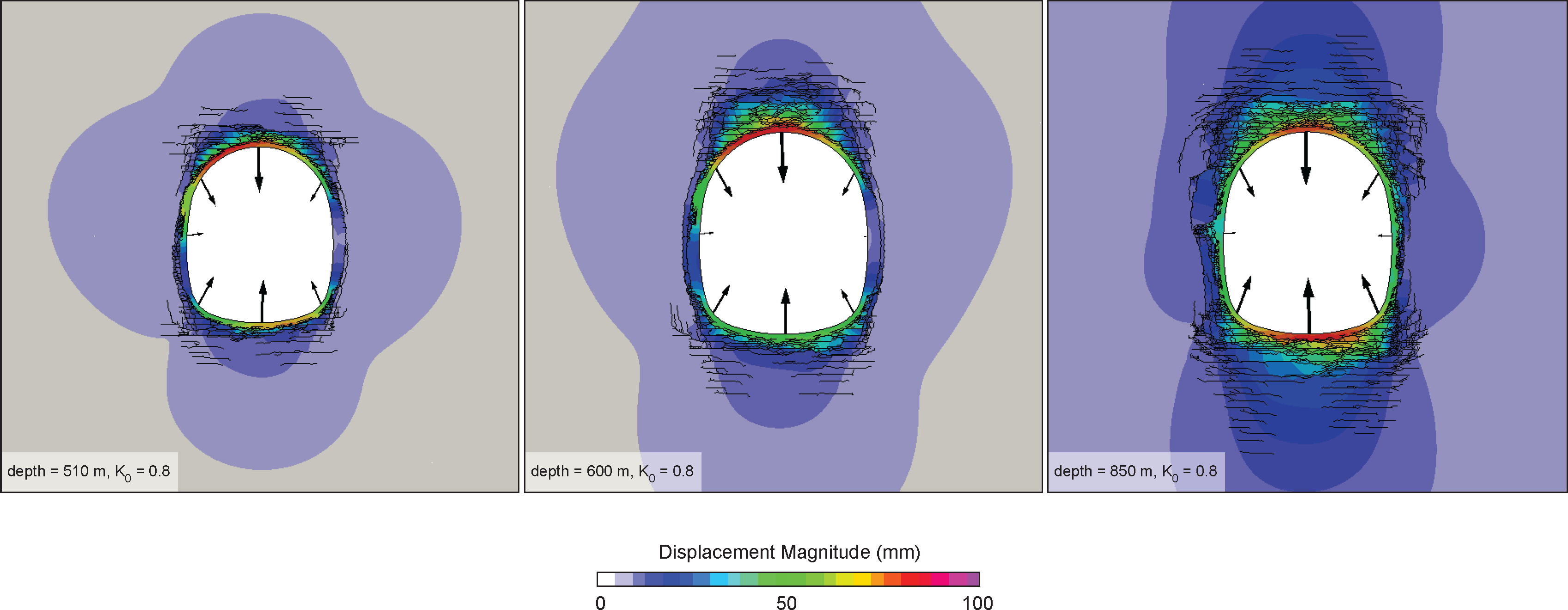THE CHALLENGE
- Clay shales exhibit characteristics that deem them suitable for long-term nuclear waste storage.
- Their favorable isolation properties could be negatively impacted by rock fracturing developing around underground structures, the so-called Excavation Damaged Zone (EDZ).
- EDZ initiates and evolves in response to complex interaction between stresses, rock mass fabric, and time-dependent hydro-thermo-mechanical phenomena.
- Analysis and prediction of EDZ behaviour is a key component of safety assessment procedures.


THE SOLUTION
- Irazu is equipped with modelling capabilities that are well suited for the assessment of EDZ in clay shales and other host rocks:
- explicit simulation of brittle fracturing, accounting for rock anisotropy, and natural discontinuities;
- effective stresses and coupled thermo-hydro-mechanical capabilities; and
- thoroughly validated modelling approach based on extensive laboratory and field data.
- Numerically generated EDZ fracture networks can be directly used as input for hydraulic flow models during post-processing.
THE RESULTS
- Predict initiation and evolution of EDZ and quantify possible variations of EDZ shape and extent as a function of repository depth, in-situ stress regime, rock strength, and support type.
- Analyze the effects of bentonite backfill swelling, including the long-term reduction of fracture porosity in the EDZ and the formation of highly conductive channels due to fracture self-propping.
- Supply critical, EDZ-related inputs (e.g., fracture aperture, length, and inter-connectivity) for long-term hydrogeological models employed in safety analyses.
